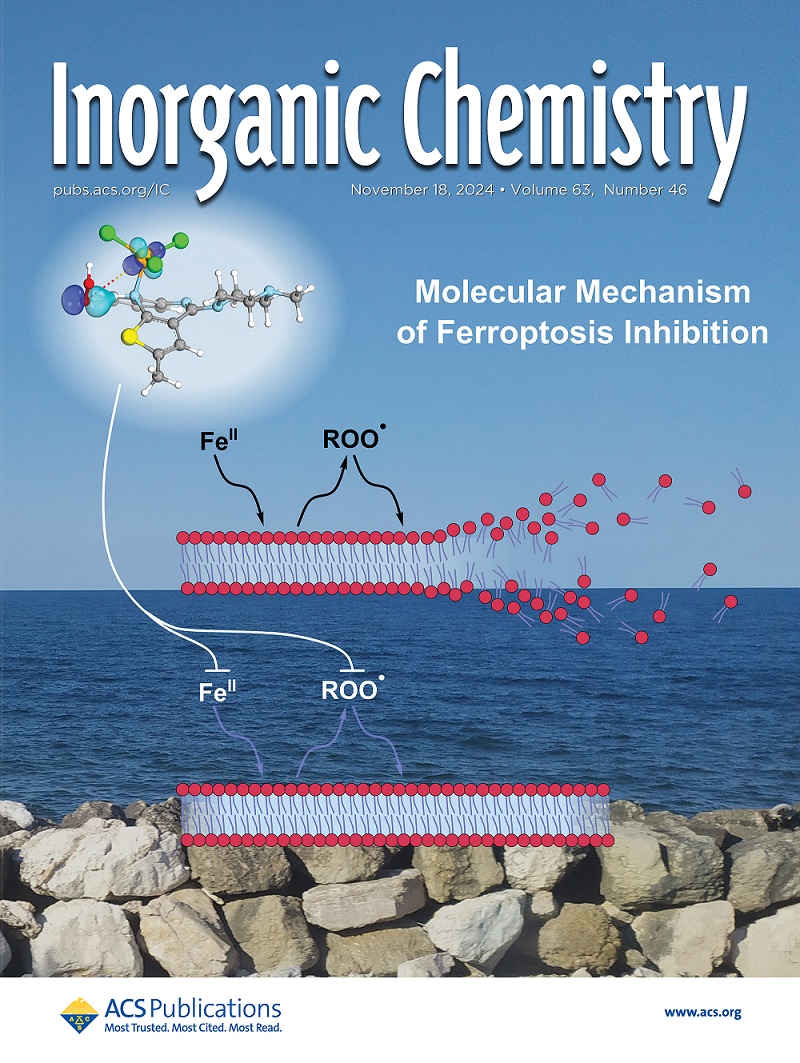配体-核对V(IV)配合物自旋弛豫的影响。
IF 4.3
2区 化学
Q1 CHEMISTRY, INORGANIC & NUCLEAR
引用次数: 0
摘要
了解磁性原子核如何影响自旋弛豫对于设计磁性材料和磁性分子的鲁棒自旋相干性至关重要。一个关键问题是,接近自旋的磁性原子核(例如,在金属配合物的配体壳中)对弛豫的影响程度,以及它在不同类别的原子核上的变化情况。在此,我们应用高场EPR、X波段EPR和交流磁化率技术对一类V(IV)配合物[V(C6X4O2)3]2-进行了研究,这些配合物在配体壳上具有5组不同的12个核自旋:X = 1H(1)、2H(2)、19F(3)、35/37Cl(4)和79/81Br(5)。我们在这些研究中发现了一些意想不到的结果。例如,在高场/高频率下,我们发现具有最高磁矩配体核自旋的化合物1表现出该系列中最长的相记忆弛豫时间。此外,在较低的场中,我们发现自旋晶格弛豫时间及其场依赖性与配体有关,尽管五种物质的电子结构没有明显变化。基于这些数据,结构比较和拉曼光谱数据,我们初步得出结论,1-5的自旋晶格弛豫性质源于局部磁环境随着X原子身份的改变而发生的微调。本文章由计算机程序翻译,如有差异,请以英文原文为准。
Ligand-Nuclei Effects on Spin Relaxation in V(IV) Complexes.
Understanding how magnetic nuclei affect spin relaxation is vital for designing robust spin coherence in magnetic materials and molecules. A key question is the extent that magnetic nuclei close to a spin (e.g., in the ligand shell of a metal complex) influence relaxation and how it varies over different classes of nuclei. Herein, we apply high-field EPR, X-band EPR, and ac magnetic susceptibility techniques to a family of five V(IV) complexes of the type [V(C6X4O2)3]2-, featuring five different sets of 12 nuclear spins on the ligand shell: X = 1H (1), 2H (2), 19F (3), 35/37Cl (4), and 79/81Br (5). We found several unanticipated results in these studies. For example, at high-field/-frequency, we found that compound 1, with the highest-magnetic-moment ligand nuclear spins, exhibits the longest phase memory relaxation times of the series. Furthermore, at lower fields, we found that the spin-lattice relaxation time and its field dependence were ligand-dependent, despite no obvious change in electronic structure across the five species. Based on this data, structural comparisons, and Raman spectroscopic data, we tentatively conclude that the spin-lattice relaxation properties of 1-5 stem from fine-tuning of the local magnetic environment with changing identity of the X atoms.
求助全文
通过发布文献求助,成功后即可免费获取论文全文。
去求助
来源期刊

Inorganic Chemistry
化学-无机化学与核化学
CiteScore
7.60
自引率
13.00%
发文量
1960
审稿时长
1.9 months
期刊介绍:
Inorganic Chemistry publishes fundamental studies in all phases of inorganic chemistry. Coverage includes experimental and theoretical reports on quantitative studies of structure and thermodynamics, kinetics, mechanisms of inorganic reactions, bioinorganic chemistry, and relevant aspects of organometallic chemistry, solid-state phenomena, and chemical bonding theory. Emphasis is placed on the synthesis, structure, thermodynamics, reactivity, spectroscopy, and bonding properties of significant new and known compounds.
 求助内容:
求助内容: 应助结果提醒方式:
应助结果提醒方式:


